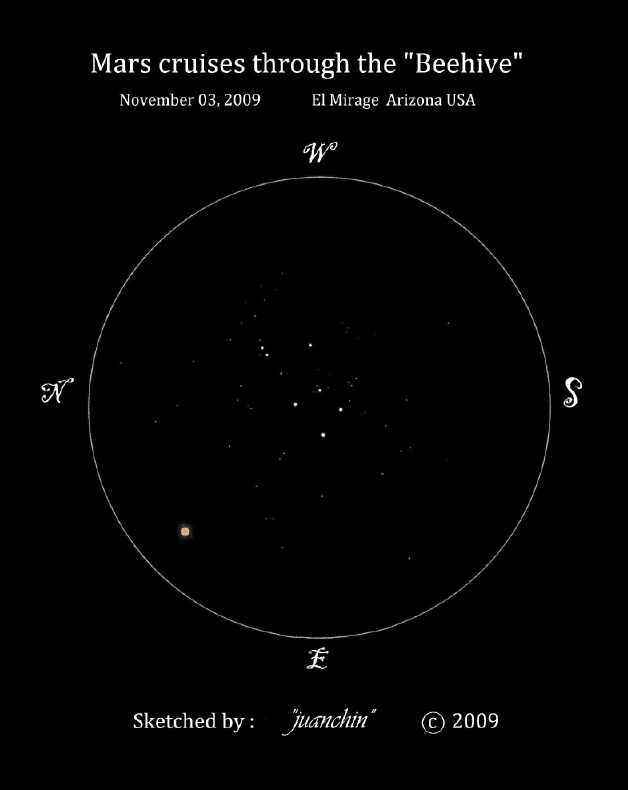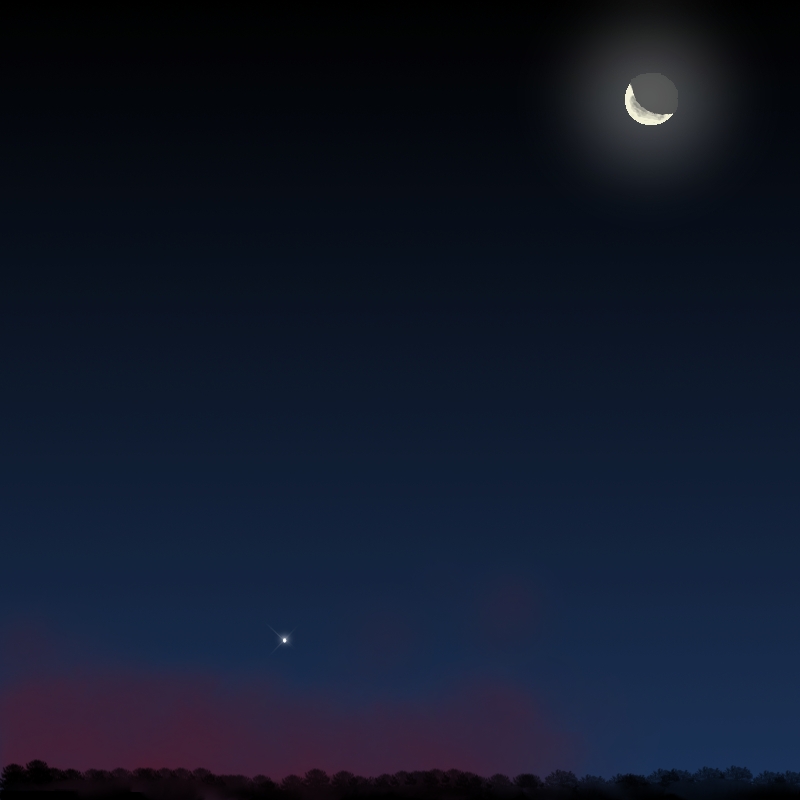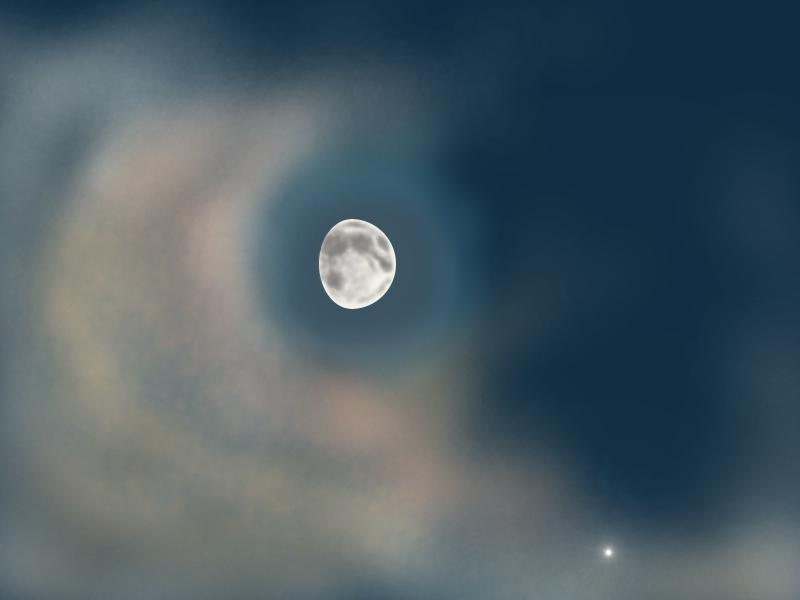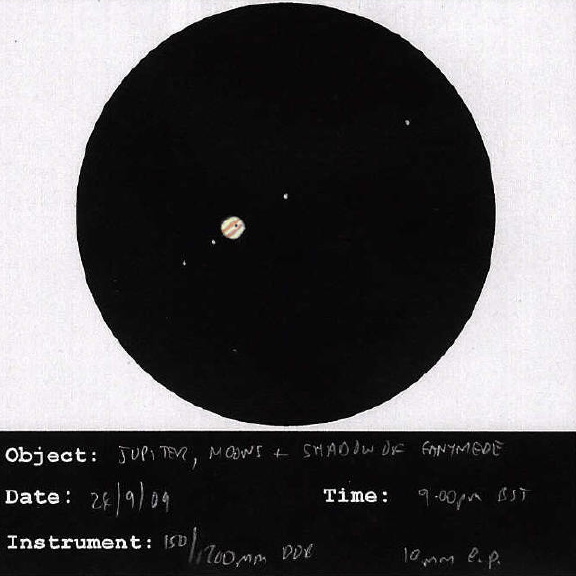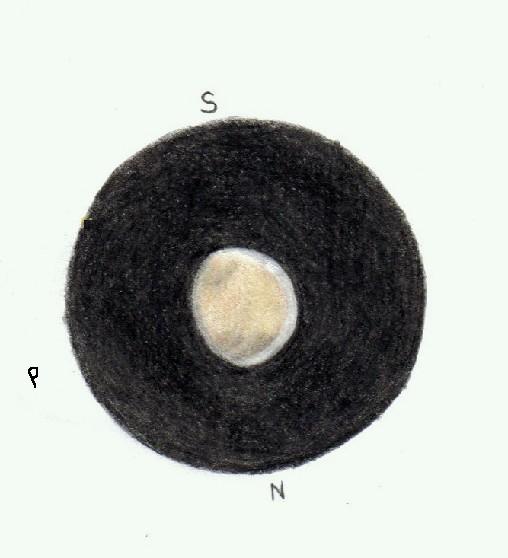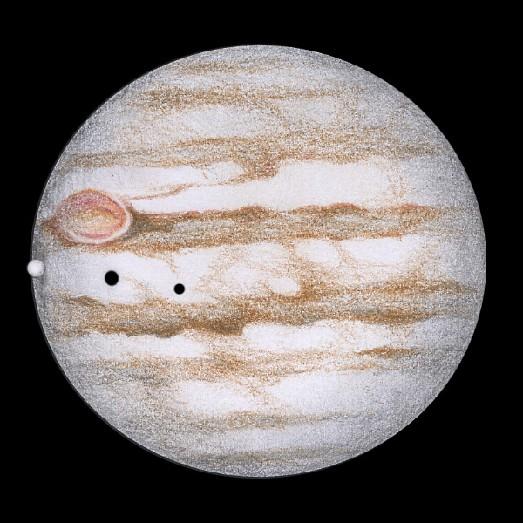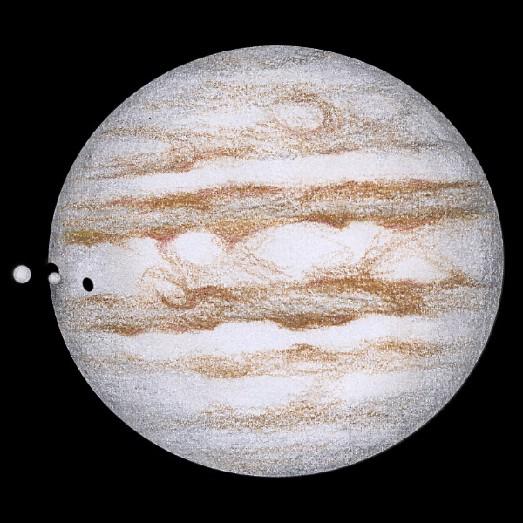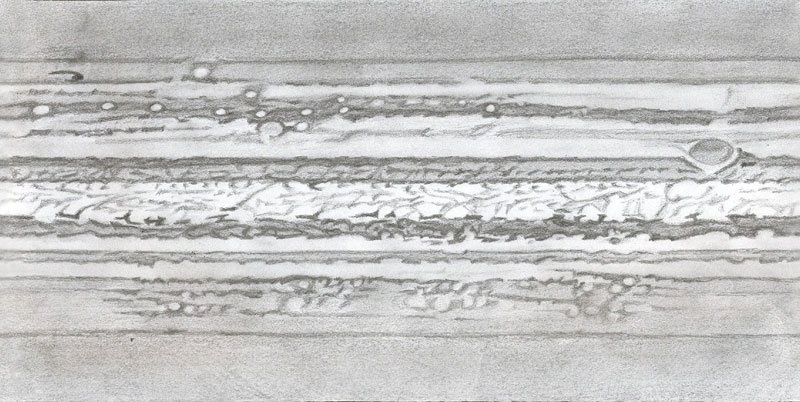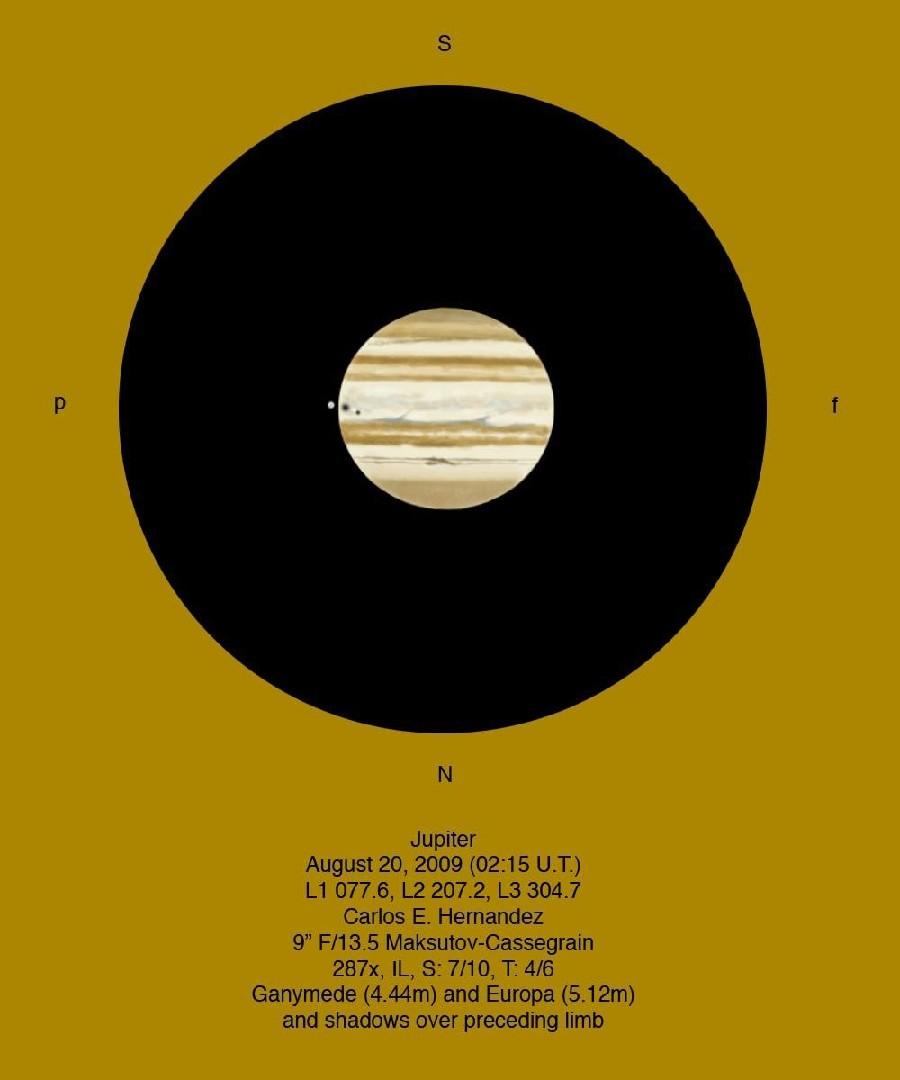
Jupiter and Moon on August, 20th 2009
Sketch and Details by Carlos Hernandez
I made an observation of Jupiter on August 20, 2009 (02:15 U.T.) using my 9-inch F/13.5 Maksutov-Cassegrain. I noted much detail over the jovian disk as indicated. I was also able to make out albedo markings over Ganymede when the seeing steadied.
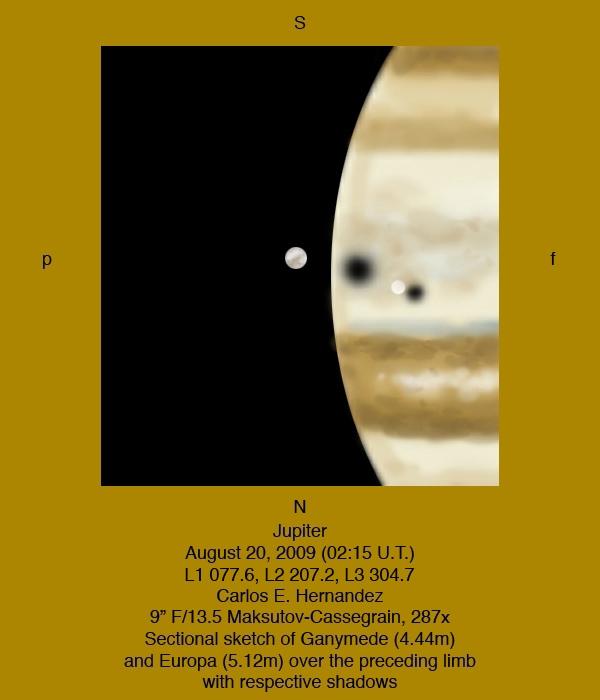
Jupiter and moons on August, 20th 2009 close up
Sketch and Details by Carlos Hernandez
Date (U.T.): August 20, 2009
Time (U.T.) 02:15
L1 077.6, L2 207.2, L3 304.7
Instrument: 9-inch (23-cm) F/13.5 Maksutov-Cassegrain
Magnification: 287x
Filters: None (IL)
Seeing (1-10): 7, Antoniadi (I-V): II
Transparency (1-6): 4
Notes:
South Polar Region (SPR): The Wesley Impact Scar (WCIS) was not clearly visible over the northern border of the SPR. This agrees with the images of the WCIS obtained recently which indicate the dissipation of the impact debris. The region appeared dark to dusky (3-4/10) and mottled.(STZ): Appears shaded to bright (6-7/10), but no other detail is visible within.South Temperate Belt (STB): Appears dark to dusky (3-4/10) with a dark (3/10) elongation projecting into the South Tropical Zone (STrZ) towards the preceding limb. South Tropical Zone (STrZ): Appears bright (7/10) with the dark (3/10) elongation over it’s preceding half extending from the STB. South Equatorial Belt (SEB): Appears dark to dull (3-5/10) with it’s southern component dark to dusky (3-4/10) and northern component dusky to dull (4-5/10).Equatorial Zone (EZ): Appears bright (7/10) with an irregular, dull (5/10) band over the equator. Very bright (8/10) and large ovals are noted over it’s northern half. Blue festoons (3/10) are noted to project into it from the southern border of the NEB.North Equatorial Belt (): Appears dark to dusky (3-4/10) with dark (3/10) extended barges (or coalesced groups of barges) noted along the northern border and blue festoons along the southern border. Bright to very bright (7-8/10) rifts are noted within it. North Tropical Zone (NTrZ): Appears bright (7/10) without any other detail visible within it.North Temperate Belt (NTB): Appears bisected and dusky (4/10) with an elongated, dark (3/10) condensation extending between the two components (center transit timed at L2 216.2/L3 313.8). Another dark (3/10) condensation was visible over the northern component preceding the larger condensation. (NTZ): Appears bright (7/10) without any other detail visible within it. (NPR): Appears dark to dusky (3-4/10) and mottled.
A digital image produced in Photoshop CS3.
Carlos E Hernandez
